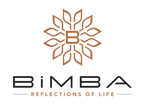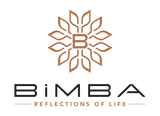Henri Rousseau Paintings
Henri Rousseau (1844–1910) was a torchbearer for avant-garde artists who defied conventional norms to navigate their own artistic path. Ridiculed for his lack of formal training and his Naive and Primitive style, he was a self-taught artist. Pablo Picasso was so enamored by his work that he threw a banquet in his honour, which became one of the most notable events of the 20th century.
Henri Rousseau's most famous painting, Tiger in a Tropical Storm (1891) was inspired by his military experiences in the jungles of Mexico.
Lush green backgrounds, exotic forests, animals coyly peering through the greenery of huge leaves‒ these are the expressions that perfectly describe a Henri Rousseau painting. Known for being a self-taught artist, Henri Julien Félix Rousseau was a legendary French post-impressionist painter who learned the indispensable art of painting all by himself. Rousseau art was known for being Naïve or Primitive which meant that he was an artist who had no formal training or education regarding painting; primitivism, on the other hand, was considered a primitive experience that was recreated by artists especially in the West. Some of his famous paintings are The Dream, Tiger in a Tropical Storm, The Sleeping Gypsy, and many more. Initially, Henri Rousseau artwork wasn’t taken seriously by the critics and was considered ‘childlike’ but with time and his undying spirit for showcasing his art, his paintings were given the respect and admiration they deserved.
Born in France, 1844, into a family of a tinsmith, Henri Rousseau worked as a child and was considered an average student, given that he had dropped out of his secondary school and didn’t complete his education but was keenly interested in music and drawing. He soon began his military service in 1863 and served for four years. It is believed that the Henri Rousseau style was established because of the exposure Rousseau had during his military service and his subsequent expedition to Mexico but some believe that Rousseau never travelled outside of France and, in fact, never witnessed a jungle as well! Much of his inspiration for Rousseau art comes from his visits to Parisian botanical gardens, zoos, observing taxidermied animals, closely studying illustrated books and postcards, and the tell-tales of the fellow soldiers who survived the expedition to Mexico from 1862-1865. Rousseau moved back to Paris after the death of his father to support his widowed mother. Soon, he married Clémence Boitard and became a tax collector for a Paris toll office which earned him the nickname of ‘Le Douanier Rousseau – the toll collector’. He was a father to six children out of which only one survived.
Henri Rousseau artworks began when he started painting at the age of 40 and to continue his passion, he officially retired from his government job at the age of 49. Henri Rousseau jungle paintings were initially rejected and ridiculed by various critiques as they considered him untrained and declared his work ‘childlike’. But his work was highly appreciated by fellow artists like Pablo Picasso, Jean Hugo, Leger, Beckman, and others, and Henri Rousseau paintings were exhibited several times at the Salon des Indépendants. Pablo Picasso was known to have great admiration for Rousseau art and once found a Henri Rousseau art being sold in the street to be further painted over; Picasso immediately recognized his work and soon, in 1908 he held a banquet in Rousseau’s honor which came to be known as ‘Le Banquet Rousseau’ and was attended by various artists and influential people Gertrude Stein, Jean Metzinger, Juan Gris, Guillaume Apollinaire, Max Jacob, Maurice Raynal, and Leo Stein amongst others.
Henri Rousseau paintings are famous for their jungle-based themes; its peculiar portrayal of greenery along with animals and humans almost makes it abstract. Apart from the usual Henri Rousseau jungle paintings, he was also famous for developing a new style known as the ‘portrait landscape’. This Henri Rousseau portrait style was distinct – the artist would place people in the foreground with a background of a city or a jungle. One of his portrait works is of his own, titled ‘Myself, Portrait Landscape’ in which he has painted himself in a larger-than-life-size with a Parisian landscape. Henri Rousseau art manifests the creativity and self-taught skills of the artist and on the same hand by doing his own portraits he tries to depict himself as a successful, knowledgeable, and skilled painter. The Rousseau art can be considered as a work of an amateur; Rousseau was ridiculed for not having a sense of perspective and proportions, yet his work had a long-lasting impact on people which eventually made his paintings emerge as classics.
Till the time he was ready to retire, Henri Rousseau artworks had reached their pinnacle; his paintings became more detailed and focused on depicting exotic sceneries. His last painting was ‘The Dream’; this large Henri Rousseau painting was from one of his jungle themes and yet stood out from the rest. This Rousseau art depicted a nude woman named Yadwigha, who was Rousseau’s mistress, settled on a sofa in the midst of a lush green jungle; her hand stretched out and in the background, one can spot monkeys, an elephant, a lion, and a lioness, a snake in the midst of flowers and leaves. Rousseau implies that Yadwigha might have fallen asleep on the sofa and dreamt of this scenery. Soon, Henri Rousseau suffered a phlegmon in his leg which eventually caused his death in 1910. His self-taught art and unabashed use of imagination left an artistic impact on the minds of his fellow artists like Pablo Picasso, Fernand Léger, the Surrealists, Jean Metzinger, and many more. Not only artists but he continued to influence other art forms; American poet Sylvia Plath imbibed his work in her poems, the song ‘Jungle Line’ by Joni Mitchell was influenced by Rousseau art and even the animated movie Madagascar took inspiration from Henri Rousseau paintings. To date, a lot of his work has been showcased in different exhibitions all over the world. A man who was ridiculed for not been formally trained, left irreplaceable art treasures for the world to learn from.
Our collection of Henri Rousseau paintings consists of his works which rightly reflect his love for the lush greens, animals, and portraits; not only are they aesthetically done and pleasing for the eye but also depict the sheer talent that Henri Rousseau exhibited without the help of any formal training. Henri Rousseau’s most famous paintings consist of Fight between a Tiger and a Buffalo Henri Rousseau painting, The Past and the Present or Philosophical Thought Henri Rousseau painting, Banana Harvest Henri Rousseau painting, Landscape and Four Fisherman Henri Rousseau painting, Landscape and Four Young Girls Henri Rousseau painting, Monkeys and Parrot in Virgin Forest Henri Rousseau painting, Portrait of a Woman in a Landscape Henri Rousseau painting, Rendezvous in the Forest Henri Rousseau painting, The Banks of the Biѐvre near Bicȇtre Henri Rousseau painting, The equatorial Jungle Henri Rousseau painting, The Family Henri Rousseau painting, The Laundry Boat of Pont de Charenton Henri Rousseau painting, The Repast of the Lion Henri Rousseau painting, Tropical Forest with Monkeys Henri Rousseau painting, View of the Montsouris Park Henri Rousseau painting, The Kiosk Henri Rousseau painting, Duplicate of 1035 Henri Rousseau painting and Woman with Basket of Eggs Henri Rousseau painting.

